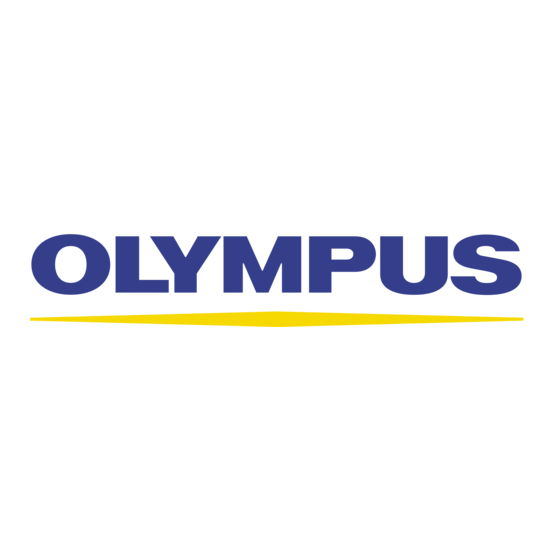Olympus CK2-BIP Manual de instrucciones - Página 9
Navegue en línea o descargue pdf Manual de instrucciones para Microscopio Olympus CK2-BIP. Olympus CK2-BIP 15 páginas.

Il!I
U5B of the
mechanical
s~
Fig 14
Fig 12
o
•
m
~
~
(5
z
II
Fig
13
lAs
seen
through eyepiece tube,
with eyepiece removed}
11 A Tetasaki holdef
I
is oplJOnally available to hold a Tetasaki plate
Of
a 65mm-dia. petri dish. while
an
optional slide glass hoidel'
2
can
be used to hold a 1"
x 3" slide glass
Of
a 54mm-dia.
petri
dIsh
on
the stage IFig. 121
21 A 96-wel1 micro-titre plate
Of
a 24-we1l micro-titre plate can
be
directly mounted on the stage. [Fig 121
*
The 35 mm-di•. petri dish holder @ provided is used to prevent
a specimen veu&! from falling through the opening in the plein
stage. (Fig. 121
m
Aperture iris diaphragm
An aperture iris diaphragm buill in the illuminator is used to limit
lhe angular aPerture of an objecllVll in brightfjeld. and controllable
10 oblain optimum obitctiVll perforfT\itf"lOll, depending upon focal
IengIh. contrast and r8lOlution. The ope'llng of IN! aperture ins
diaphragm
should
be matched to the
N.A of the objecti..e in u•.
It
is
often preferable,
however,
10 Stop down lhe apertUre d..·
pl'lfagm to
about
70% through 80% of the
ootectlVe
NA IF'O 131
*
An unsuined specimen can
be more nsily observed with a
stopped-down aperture in bright filtld.
If)
Sening of the correction collar
An Inverted microscope is conveniently arranged to observe
weeimem contained In vessels of various bonom thicknesses. In
order
10
al;hieve optimum obiectiVll performance of lhe inverted
micrOSCoPe, the high N.A. objectives are provided with a correction
collar
<D.
[Fig 14)
The correction collar is effective with a veueI bottom from 0 to
2mm thickness.
11
If
the thickness of the vessel bottom is known.
Match the CO'rection collar to tM thickness of the
vessel
bollom
by the collar scal. provided
2) " lhe thickness of the _ I bollom Is unknown:
The OPtimum POSition for the correction collar
can
be obta,....:l
from the image resolution. After focus adjustment, if a
satisfac·
tory sharp image
is
not obtained, rotate 1M
correction collar to
the right and left
10
lnat you can compare the imagll!i at both
sides. Reset lhe collar to tnt bener Image, then S1arting from
lhis position, further rOtate the collar to the right and left until
both images can be Obtained for comparison with each Other.
As you repeat Ihis procedure several times, you can find besl
position for the correction collar, Refocus after rotaling the correc·
tion collar.
lEI
Filters
...:===:..__
~
Optimum selection of filters enhances the elleaive performance in
observati(lfl and
photomicrography,
No
Filter
Pu""""
1
InterlerfnO! 19reenl
4S.IF550
Enh¥Fces Pl'lam CX)l'ltrast ifn9S.
2
Neutral d."ity (gray)
43ND2S-W45
Reduces hght intensity w,thout ctFaog ng spect....1
characteristics of the light 3OUrce.
3
Light balancing
4S.LBD-2N
For color photomicrography With daylight film.
,
Heat abtorbing
45·HAo
Absorbs heat waves from Ihe light KlUrCl 10 pro·
teet tnt specimen.
*
This f,lt.r IS bu,lt
In
the CK2. It IS recommended to add. second heat absorbing fllt.r for prolonged
